Your cart is currently empty!
Growing Asparagus From Seed
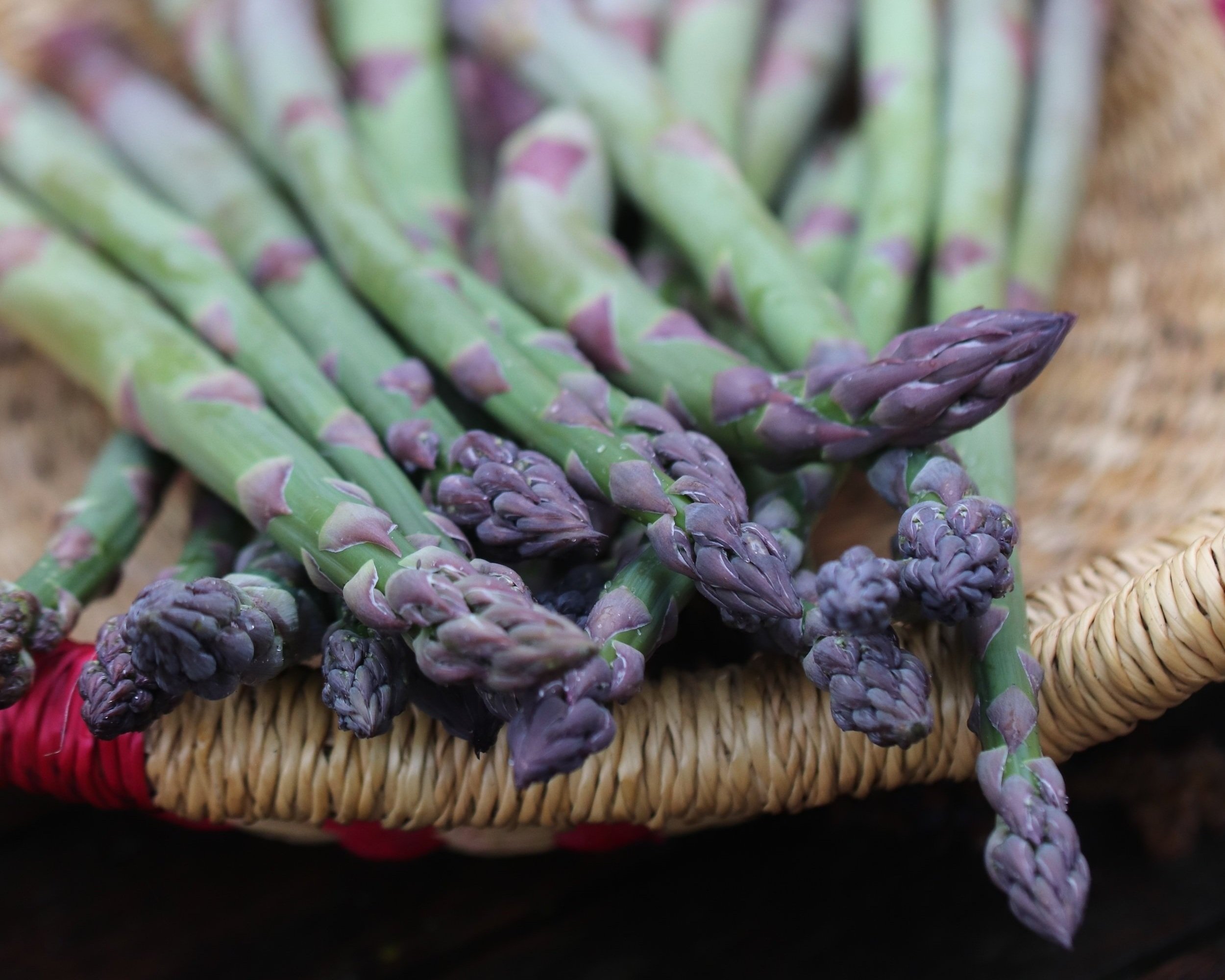
Get updated by email whenever there’s a new post
Asparagus and its unique texture and flavor evokes strong feelings from people. Do you love it or hate it? We are asparagus lovers, devouring it when in season from early May through mid-June, abstaining when it’s not in season. It does not freeze or can well, so it’s a true feast or famine crop for our family.
The biggest secret about asparagus is how easy and affordable it is to grow from seed, not only saving you money but also producing harvestable food faster than if purchasing crowns. Growing from these one year old dormant plants, called crowns, is the industry standard and what we used to think was the only way to grow them. It wasn’t until several years ago that we learned starting asparagus from seed was possible — and this was an eye-opening experience for us.

If established early and transplanted well, asparagus can produce a harvestable crop of spears in year two. Year two is the same age as a crown, whose establishment takes another 1-3 years until harvest. While we only harvested a few of the largest spears off the strongest plants, let’s just reflect on how incredible this is relative to conventional knowledge: that’s the same age of the crowns sold commercially which then take another few years before you can begin to harvest. By starting our seed super early, we saved at least 2 years in the establishment of our asparagus patch.
When we planned our dream garden in the fall of 2016, we allocated a very large space for asparagus and it is too soon to tell if it’s too much or just right. We know it’s not too little, that’s for sure. I have my theories, but I’ll let it unfold over the next few years before say I was right.
Following the advice we read from various sources, we established a 40 plant bed, 10 plants per person in our household. The only glitch to this logic is that half our household doesn’t love asparagus, so in reality we are growing more like 20 plants per human, twice the recommended amount for your homestead. Luckily we have many good friends and neighbors who love it as much as we do!
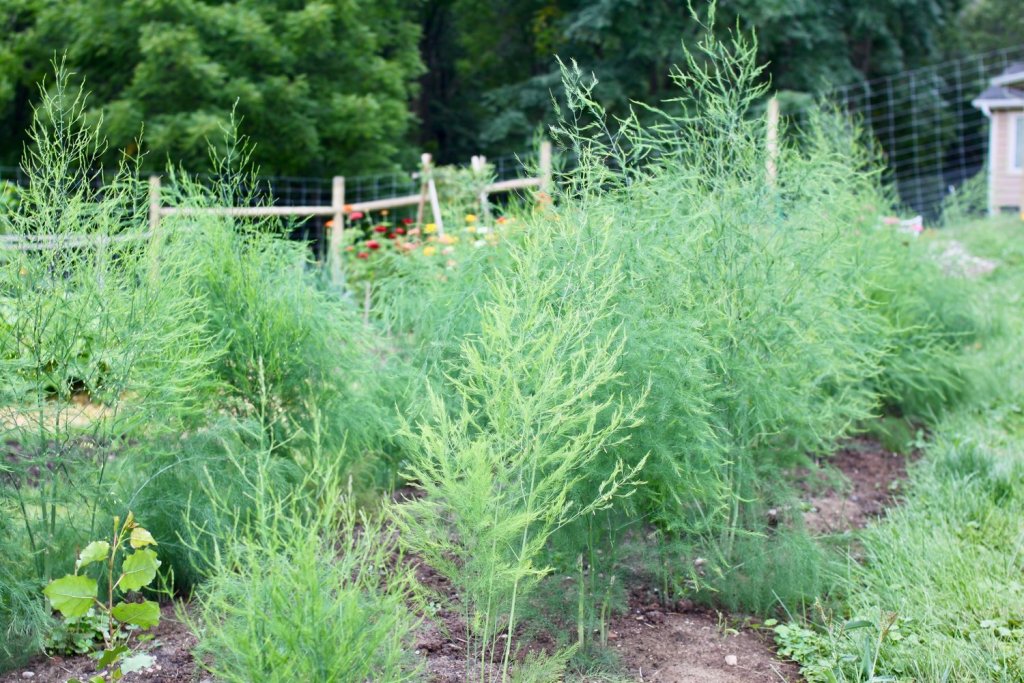
This unique veggie, unlike almost all the other annual vegetables we eat excepting rhubarb, is a perennial: it’s roots go dormant in Winter along with perennial flowers like peonies and coneflowers, just like deciduous trees and shrubs. Like those plants, they take a little extra care to get established but are an easy and affordable food to grow from seed — and with a little annual maintenance of weeding and fertilizing will yield for several decades in a home garden.
While I oversee all our annuals (fruits, veggies, and flowers), my husband is the perennial fruit and veggie grower, so I let him select the variety and was just along for the ride. We purchased 70 asparagus seed for $10, which equated to $0.25/transplant because we cultivated the strongest 40 plants for our garden. When compared to $1.50-$2.00/crown, it is a bargain and one to consider when establishing your asparagus patch. He chose Jersey Knight, a male-dominant hybrid variety, meaning the seed would be almost entirely male.
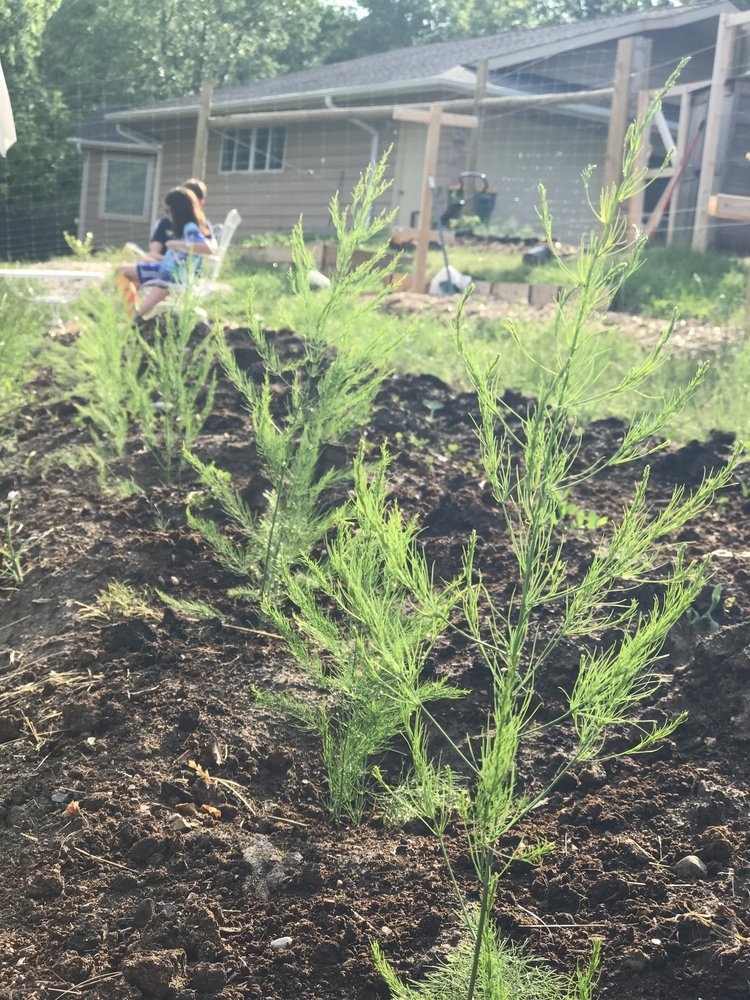
Why this matters is because asparagus is a dioecious plant, meaning plants are either male or female, producing only stamens or pistils and never both. One female plant inside a patch of males will produce dozens and dozens of viable seed annually. The plants are indistinguishable until after the bees have had their fill and the fruit develops; the plants with the red berries in late summer are the females. In year two, our plants flowered for the first time and the bees came; the asparagus pollen was a beloved garden snack for the pollinators. Out of our 40 transplants, 7 are female, which means our seed is 83% male. Some seed companies claim their seed is 100% male which is what we are working toward for ideal productivity, hence, we saved seed last summer to work toward replacing the females. And here’s why.
While we love self-seeders in some areas of our garden and especially in our native planted prairies where I invite the plants to move around until they are completely content with their location, female asparagus plants will disrupt the intentional ecology of our asparagus bed which we amended with extra sand and silt and compost to develop a rich loam. Self-seeding asparagus will compete with our established plant spacing, vying for precious resources such as compost, sunlight, and water, and will reduce overall production long-term. Additionally, female plants are not as prolific of a producer of spears as male plants, perhaps because they are saving precious energy for their seed production later in summer. We only want the strongest 40 male plants in our patch, and so are in the process of ‘weeding out’ the female plants.
We grew asparagus from crowns in our first home, but they didn’t come back the following year; it could have been poor quality crowns or it could have been too wet for them as asparagus does not live happily in wet conditions. This was in 2004, and we waited and waited until we lived in the right home to establish an asparagus patch. And after much research and deliberation, we decided to grow it from seed instead of crowns in part for economics but also because it was a fun experiment.
Start them Early
Growing asparagus from seed is totally feasible and fun and I highly recommend it. Despite what you may have read or the fact that we’ve all been taught that crowns are the way to go because starting with seed can be finicky, I’m here to give you the confidence boost to give it a go if asparagus is in your garden plans and you’re up for a truly rewarding adventure.
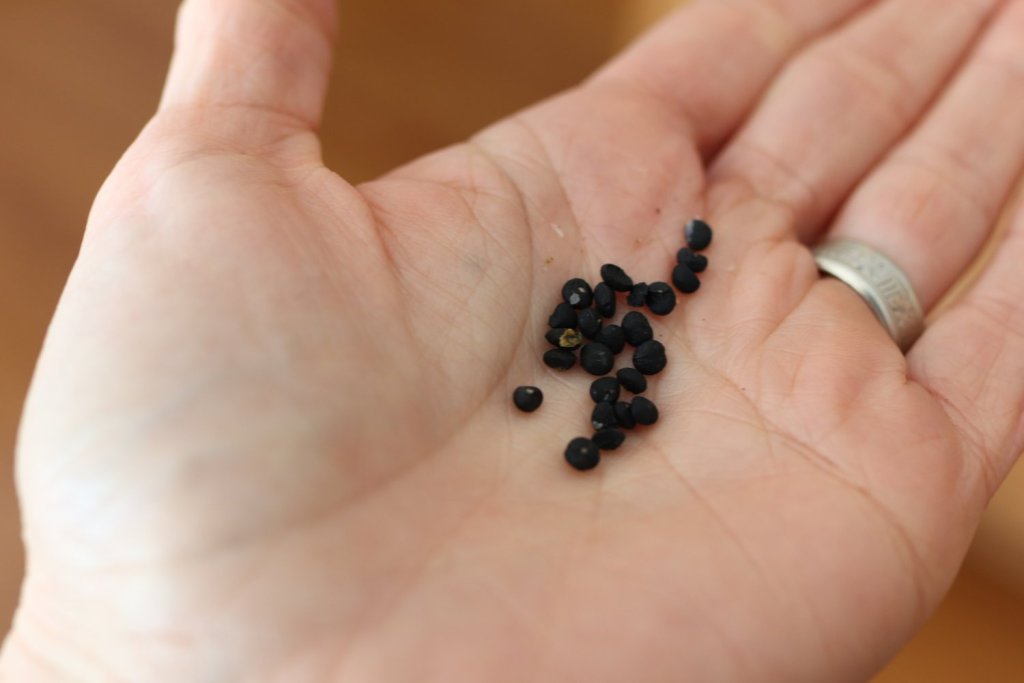
We started them February 1, 2017 and more or less followed the advice of Eliot Coleman in The New Organic Grower. Sow them extra early and bump up as needed until early you can transplant into their final home. This method required two dedicated indoor shop lights once they were in their 3” pots, so it did take additional resources than just the cost of seed.
We already owned a lot of shop lights for seed starting, so this was a sunken cost for us. We started ours in a 72-plug tray, transplanted to 3” pots about a month later – labeling the root strength as strong-medium-light – and then transplanted them into the garden by early May. We had about a dozen extra plants which we potted up into gallon pots and heeled into a bed of wood chips and irrigated all summer as our backup plants in case we lost some.
Transplanting is Key
Asparagus is a deeply rooted perennial; the roots can penetrate several feet deep, yet don’t like wet feet. So in heavier soils, it’s best to plant them only to a depth of 4” whereas in well-drained soil you can plant the tip of the crown at a depth of 8” or more. Because we amended our heavy clay soil tremendously to make it lighter and loamy and the bed drains well, we transplanted our seedlings about a foot deep.
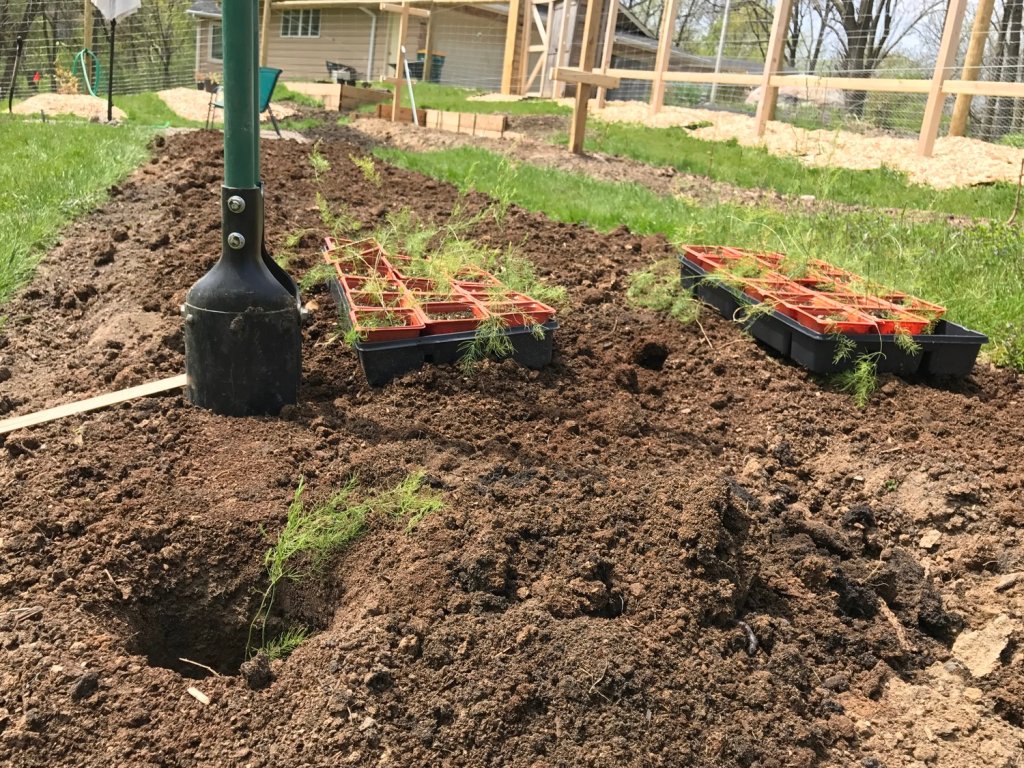
Such a simple method and much less digging than a trench. Transplanting asparagus seedlings is easy, made easier by this post hole digger method we followed after reading about it in The New Organic Grower.
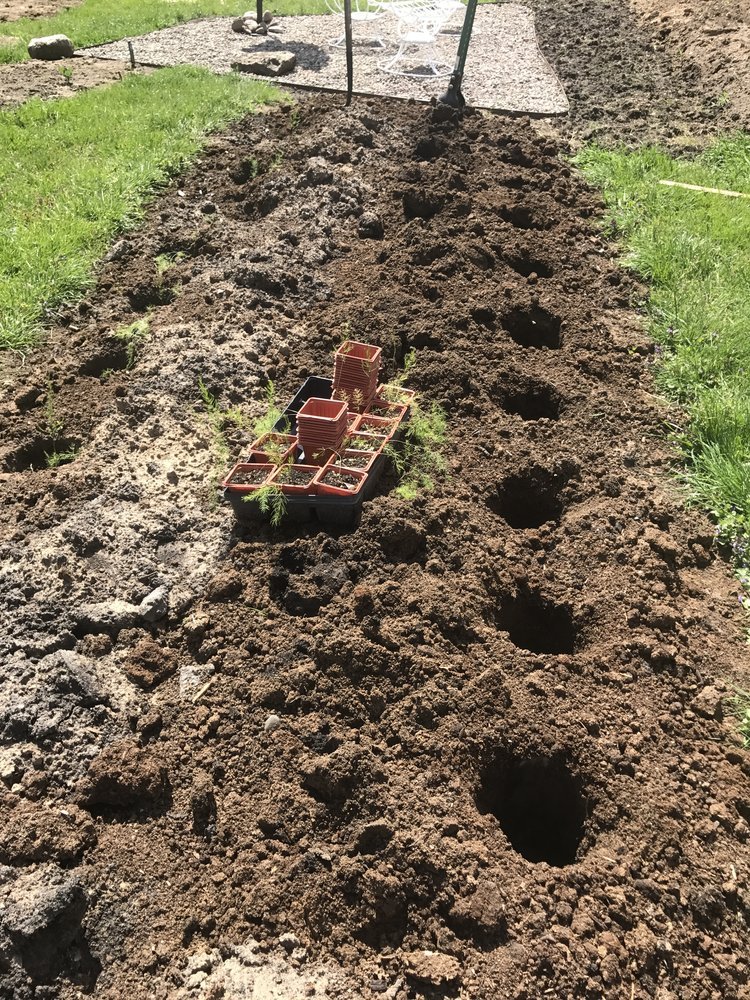
Our asparagus bed is 6 feet wide and we planted them 18” apart in rows spaced 4 feet apart. The entire bed was amended with compost and slow release fertilizer before transplanting. Once transplanted, simply fill the hole in as the fronds grow taller. The first year they didn’t grow taller than 3 to 4 feet if memory serves me. But last year, up they came, thick spears and all, and before the dog days of Summer they were over 6 feet tall. Mature asparagus is a beautiful thing in the garden, blowing this way and that in the breeze like a whimsical sea of ferns.
Since we now know we have over a half dozen female plants, we will harvest them aggressively this Spring, cutting every last spear before digging them up and replacing with (hopefully) male plants from the new cohort of seedlings we started this Winter.
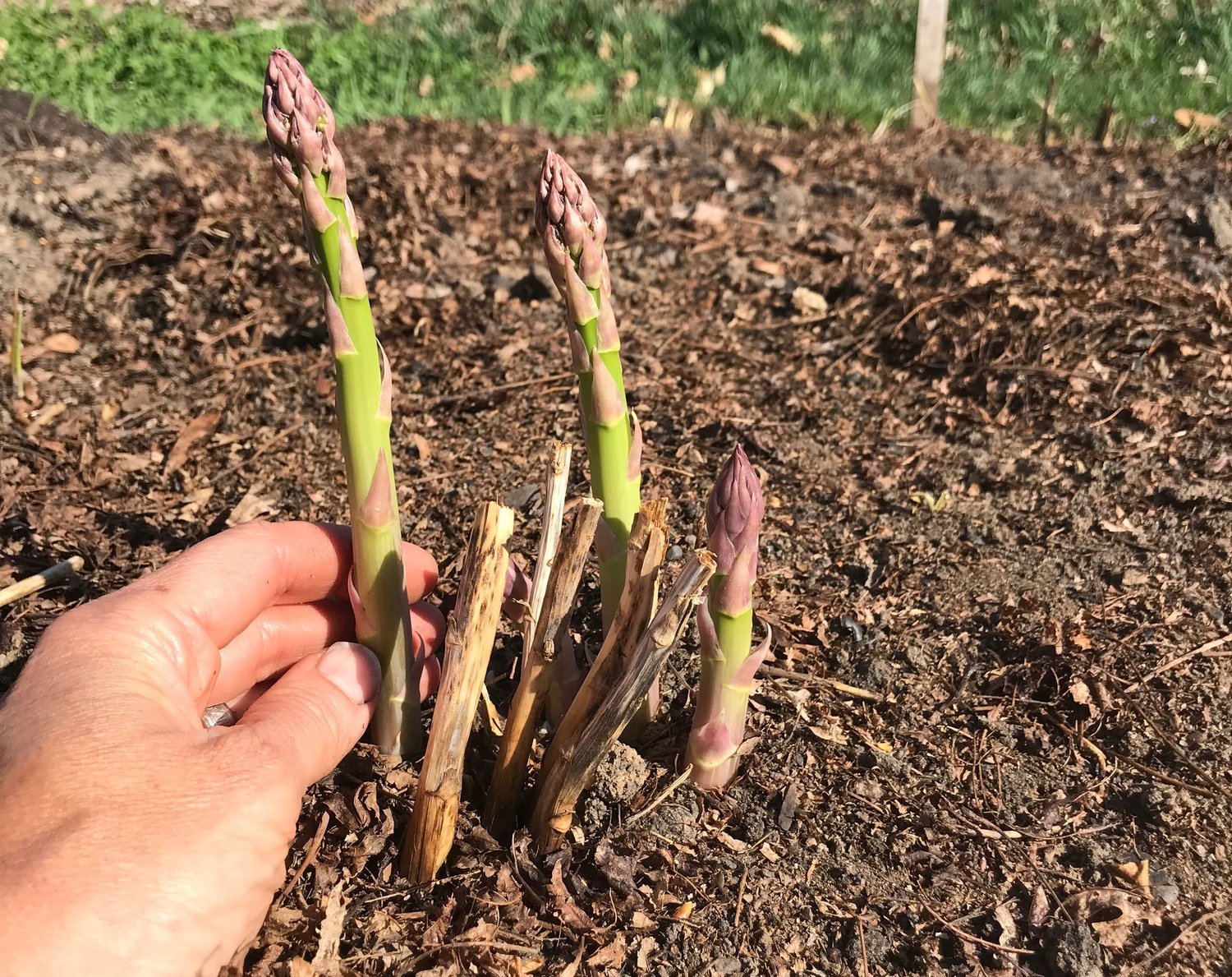
“Thicker than a pencil width” is the standard for your first asparagus harvests after you plant them. This applies to crowns or seedlings. These are our one year old seedlings and they definitely passed that test. While we continued to harvest off some of the strongest plants for up to two weeks, we stopped harvesting well before the width of the spears were less than a pencil to ensure there was ample shoot growth to support further root development last year.
The key to quick establishment of your new asparagus patch is a two-pronged approach: early establishment from seed in January or February followed by deeply transplanting the starts in Spring. By implementing this method, we were able to have a meager harvest of the largest, first spears off a handful of our 40 plants in year 1. Yes, year 1 crowns are what you purchase from commercial nurseries, who instruct you to let them establish for 2-3 years before harvesting. The process of lifting and transplanting dormant roots delays the homeowner’s ability to harvest the food, so why not leap frog your asparagus patch to its full potential a few years earlier by growing from seed?
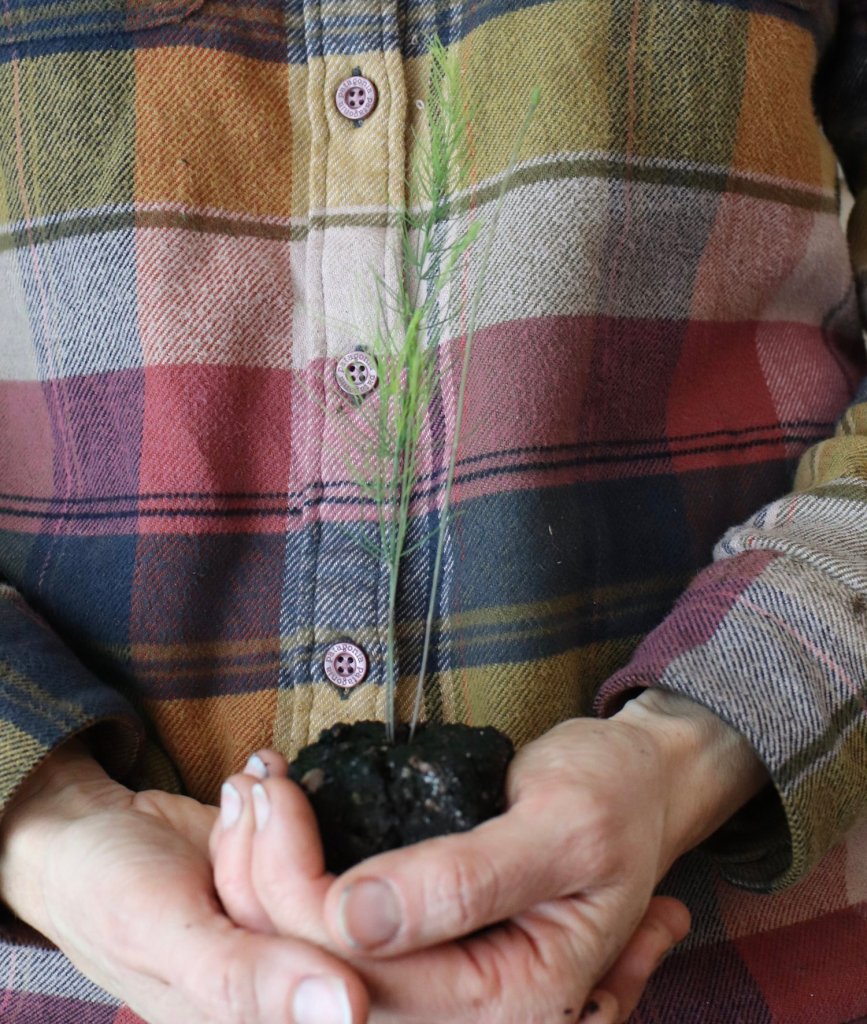
Our goal with starting our asparagus plants in January this year is that maybe, just maybe, they will decide to flower this year, although it is likely they will not. So we are basically rolling the dice with our starts, banking on the fact that they should also be 83% male and chances are 5 of the 7 transplants will be male. And if we still have females, we will comically start this process all over again in two years until we have the bed under control
Get updated by email whenever there’s a new post
Comments
If you’re a subscriber, you can discuss this post in the forums

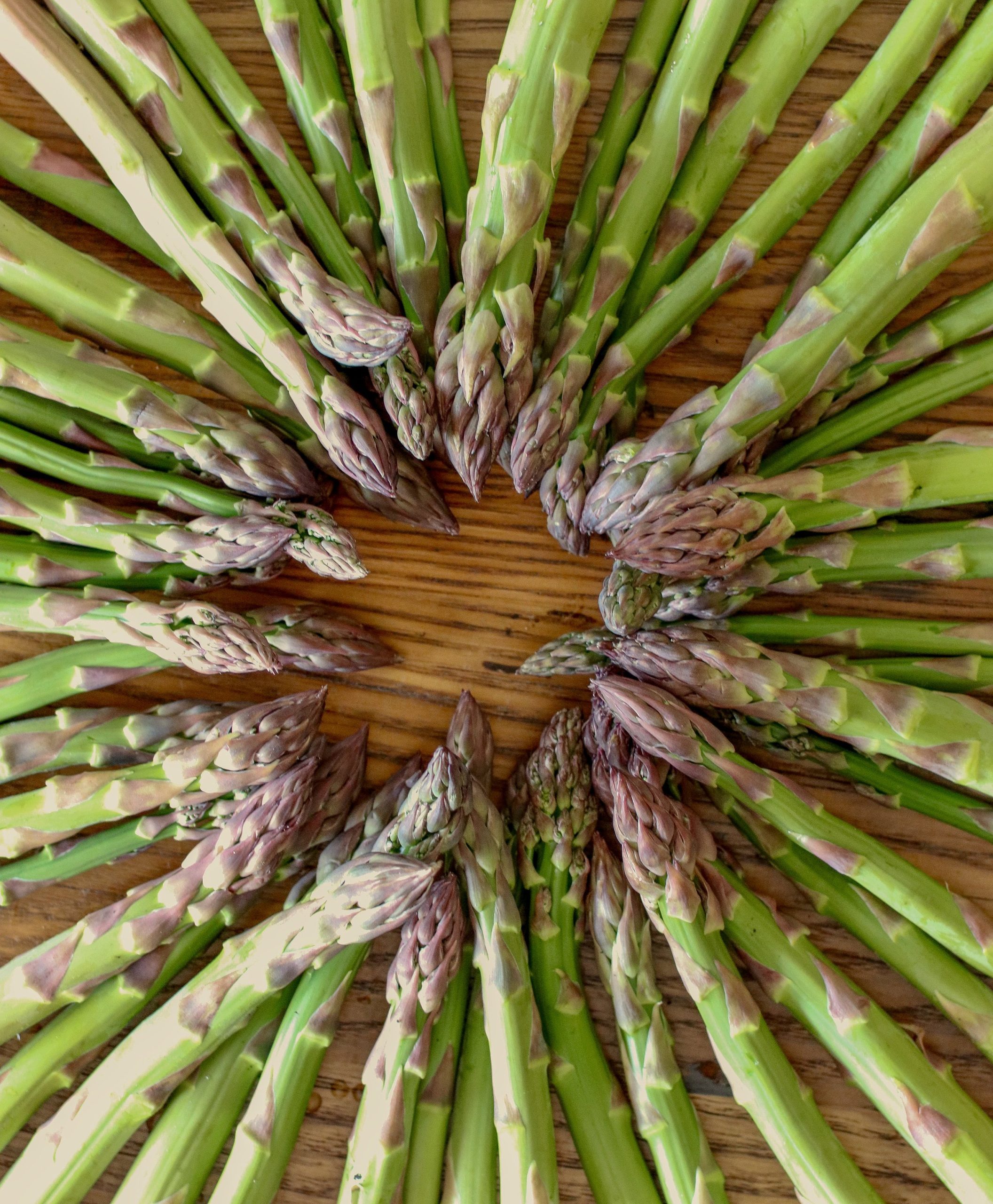
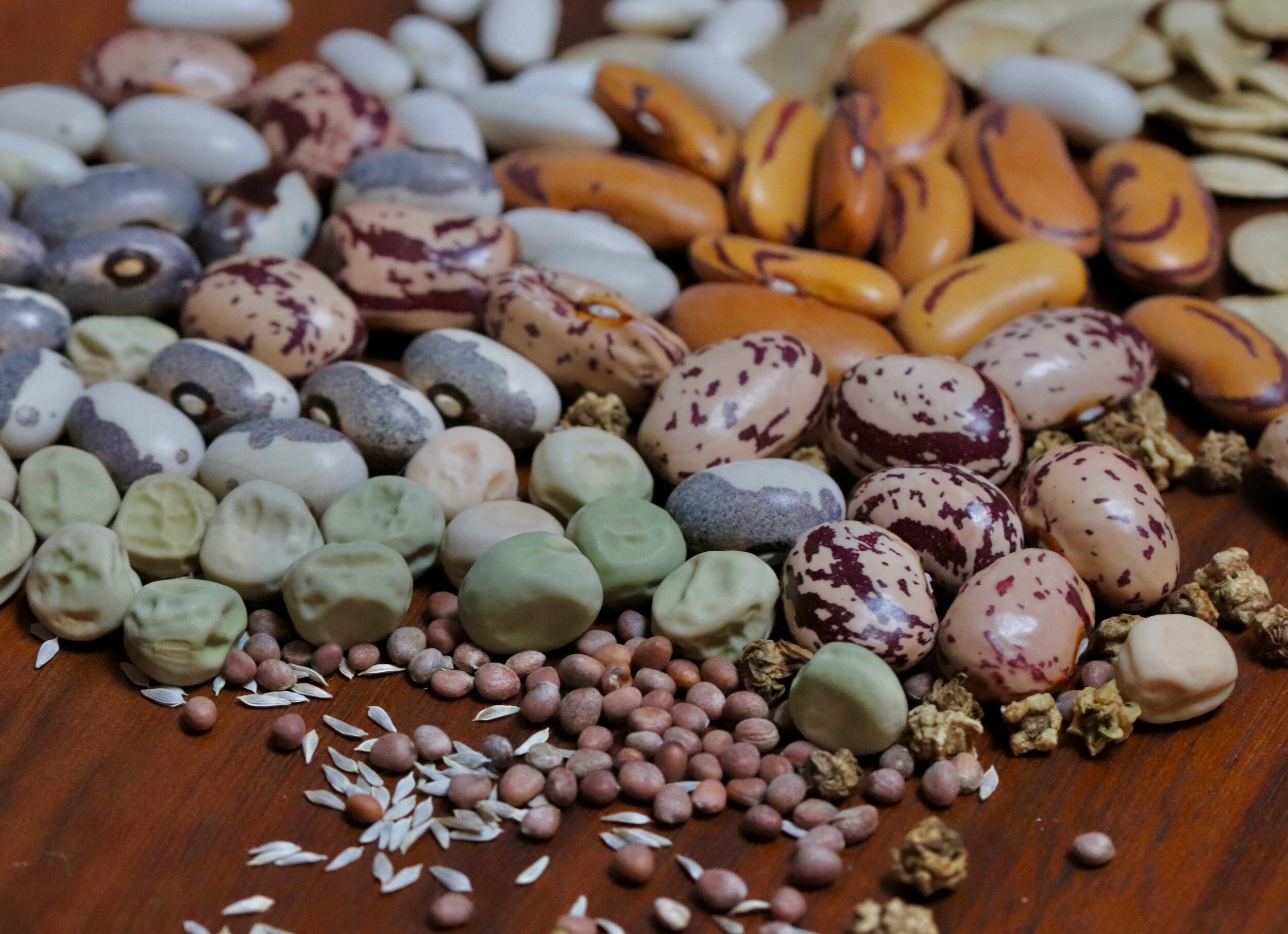
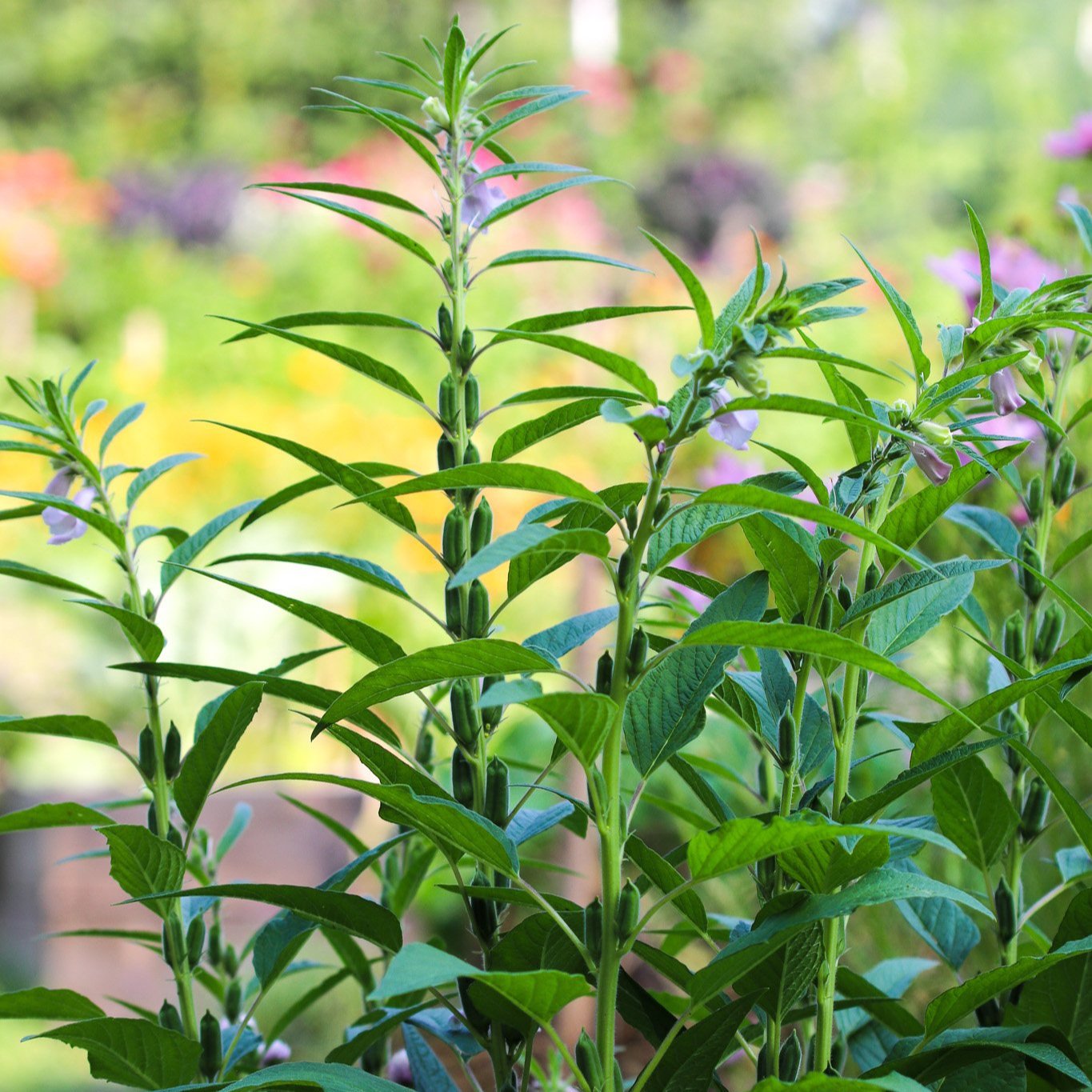
Leave a Reply